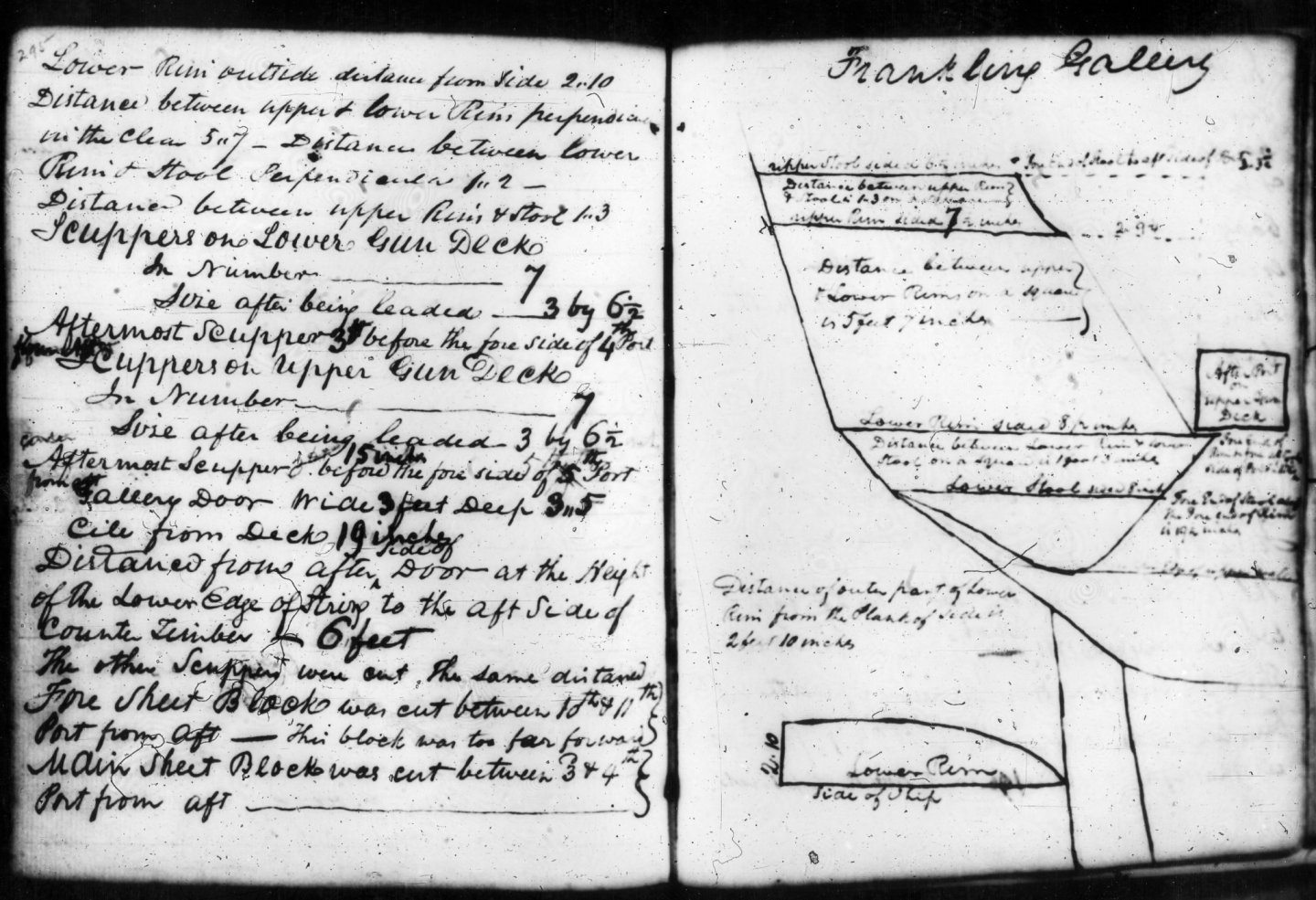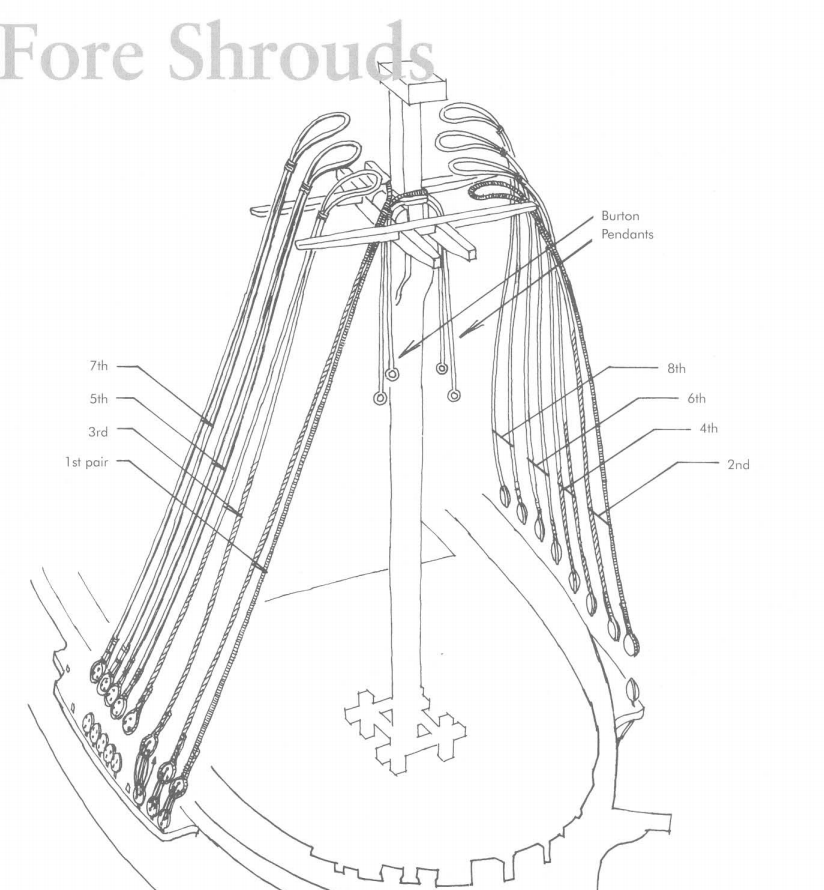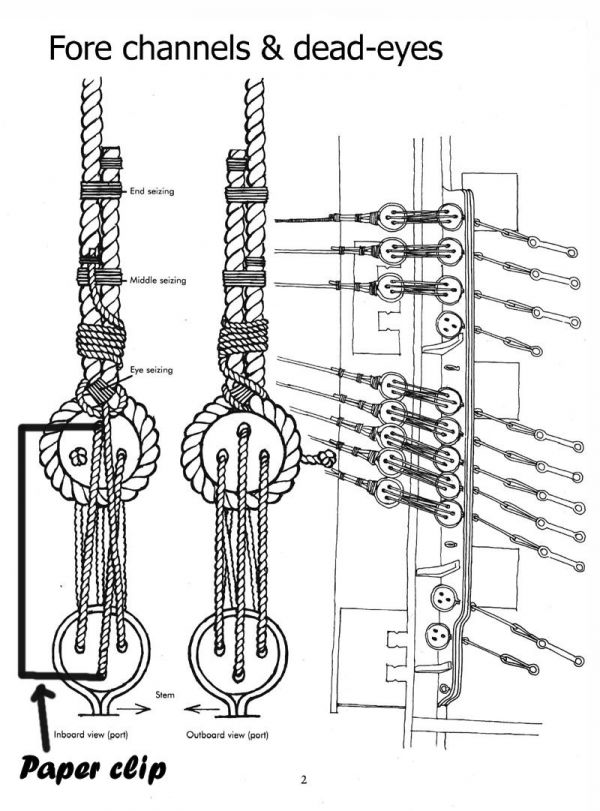-
Posts
3,156 -
Joined
-
Last visited
Content Type
Profiles
Forums
Gallery
Events
Everything posted by trippwj
-

A critique of the works of Nicolaes Witsen
trippwj replied to Philemon1948's topic in Nautical/Naval History
Like our colleague Druxey, I have also just stumbled across your thread. it is quite interesting! I have wondered about the works by Witsen and van Yk but, as I do not speak the language, have relied on others to translate or provide analysis. Have you had the opportunity to take a look at some of these - while there is a focus on the Batavia in some, there are also some more general comparisons. Duivenvoorde, Wendy van van. 2015. Dutch East India Company Shipbuilding: The Archaeological Study of Batavia and Other Seventeenth-Century VOC Ships. College Station: Texas A&M University Press. ISBN 9781623492311 Guy, Richard. 2012. “First Spaces Of Colonialism: The Architecture Of Dutch East India Company Ships,” January. https://ecommons.cornell.edu/handle/1813/29468. Luiting, Jaap. 2017. “The Peculiar Core of Nicolaes Witsens Book.” https://www.academia.edu/33274842/The_peculiar_core_of_Nicolaes_Witsens_book. ———. n.d. “Hidden Understandings at van Yk and Witsen.” Accessed June 13, 2019. https://www.academia.edu/32312724/Hidden_understandings_at_van_Yk_and_Witsen. Maarleveld, Thijs J. 2013. “Early Modern Merchant Ships, Nicolaes Witsen and a Dutch-Flush Index.” International Journal of Nautical Archaeology 42 (2): 348–57. https://doi.org/10.1111/1095-9270.12022. Keep on with your analysis - I for one find it quite interesting. I need to go back through it again and see how your observations align with what Ab Hoving describes. Hocker, Fred. 2013. “Review - Nicolaes Witsen and Shipbuilding in the Dutch Golden Age.” The Mariner’s Mirror 99 (3): 359–61. https://doi.org/10.1080/00253359.2013.792595. Hoving, A. J. 2012. Nicolaes Witsen and Shipbuilding in the Dutch Golden Age. 1st ed. Ed Rachal Foundation Nautical Archaeology Series. College Station: Texas A&M University Press. ISBN 978-1-60344-286-2 Hoving, Ab J. 2014. 17th Century Dutch Merchant Ships: Text, Photos and Plans for the Ship Modeler. Florence, OR: SeaWatch Books. http://www.seawatchbooks.com/114003. ISBN 978-0-9904041-1-8 -

Ships of the early 17th century: pictures
trippwj replied to Mark P's topic in Nautical/Naval History
My pleasure. Locating and collecting digital resources has become a very enjoyable hobby for me. Books, too, though the expense there limits me somewhat ( about 400 at last count). If you ever see something that may be of interest let me know and I'll see if I have it. -

Ships of the early 17th century: pictures
trippwj replied to Mark P's topic in Nautical/Naval History
Here are a few more - I think it may be one of the Barker articles that you saw before. I have some of them in PDF (attached). Barker, Richard. 1985. “Fragments From The Pepysian Library.” Revista Da Universidade de Coimbra XXXII: 161–78. 1985 Fragments_Barker.pdf ———. 1988. “‘Many May Peruse Us’: Ribbands, Moulds and Models in the Dockyards.” Revista Da Universidade de Coimbra XXXIV: 539–59. 1988 Many may peruse_Barker.pdf ———. 1994. “A Manuscript on Shipbuilding, Circa 1600, Copied by Newton.” The Mariner’s Mirror 80 (1): 16–29. https://doi.org/10.1080/00253359.1994.10656481. ———. 2003. “‘Cradles of Navigation’ Re-Visited.” In Shipbuilding Practice and Ship Design Methods from the Renaissance to the 18th Century: A Workshop Report, Preprint 245, 103–63. [Berlin]: Max-Planck-Institut für Wissenschaftsgeschichte. https://www.mpiwg-berlin.mpg.de/Preprints/P245.PDF. -

Ships of the early 17th century: pictures
trippwj replied to Mark P's topic in Nautical/Naval History
Whilst most of these have few illustrations the narrative may be of some interest. Baker, Mathew. 1586. “Fragments from English Shipwrightry by Mathew Baker Ca1586 Pepysian Library. - National Maritime Museum.” 1586. http://collections.rmg.co.uk/archive/objects/471338.html. Battine, Edward. 1685. The Method of Building, Rigging, Apparelling, & Furnishing His Majesties Ships of Warr, According to Their Rates. http://archives.nypl.org/mss/228. ———. 1689. The Method of Building, Rigging, Apparelling, and Furnishing His Majesty’s Ships of War. Bourne, William. 1578. Inventions or Devises : Very Necessary for All Generalles and Captaines. http://echo.mpiwg-berlin.mpg.de/ECHOdocuView?url=%2Fmpiwg%2Fonline%2Fpermanent%2Flibrary%2FEK71UE84%2Findex.meta&viewMode=index&mode=texttool&viewLayer=extended. ———. 1601. A Regiment for the Sea. Contayning Very Necessarie Matters for All Sorts of Men and Trauailers: Whereunto Is Added an Hydrographicall Discourse Touching the Fiue Seuerall Passages into Cattay. Written by William Borne. Newly Corrected and Amended by Tho. Hood, D. in Physicke, Who Hath Added a New Regiment for the Yeare 1600, and Three Yeares Following, and a Table of Declination. Whereunto Is Also Adioyned The Mariners Guide, with a Perfect Sea Carde by the Said Thomas Hood. Printed by T. Wight. http://brbl-dl.library.yale.edu/vufind/Record/3444832. Bushnell, Edmund. 1664. The Compleat Ship-Wright Plainly and Demonstratively Teaching the Proportions Used by Experienced Ship-Wrights According to Their Custome of Building, Both Geometrically and Arithmetically Performed. Printed by W. Leybourn for George Hurlock, and are to be sold at his shop. http://quod.lib.umich.edu/e/eebo/A30706.0001.001/1:6?rgn=div1;view=toc. ———. 1678. The Complete Ship-Wright. Plainly ... Teaching the Proportion Used by Experienced Ship-Wrights ... To Which Are Added, Certain Propositions in Geometry ... Also, a Way of Rowing of Ships by Heaving at the Capstane ... The Fourth Edition, Etc. 4th ed. R. W. for William Fisher. https://books.google.com/books?id=kWpnAAAAcAAJ. Hardingham, John. 1706a. The Accomplish’d Ship-Wright and Marine. printed for, and sold by John Thornton, at the Pint, and Henry White, at the Three Bibles in the Minories. ———. 1706b. The Accomplish’d Ship-Wright and Mariner: London: printed for, and sold by John Thornton, at the Pint, and Henry White, at the Three Bibles in the Minories. http://estc.bl.uk/T101501. Miller, Thomas. 1667. The Complete Modellist Shewing the True and Exact Way of Raising the Model of Any Ship Or Vessel, Small Or Great, Either in Proportion, Or Out of Proportion ... Performed by Thomas Miller. W.G. http://archive.org/details/bub_gb__FCdAgS7HUoC. ———. 1676. The Compleat Modellist Shewing the True and Exact Way of Raising the Model of Any Ship or Vessel, Small or Great, Either in Proportion or out of Proportion : Also the Manner How to Find the Length of Every Rope Exactly, and Tables Which Give the True Bigness of Every Rope in Each Vessel, Together with the Weights of Their Cables and Anchors. Early English Books Online. Printed for William Fisher ... and Eliz. Hurlock ...,. http://www.bruzelius.info/Nautica/Rigging/Miller%281667%29.html. -
Your HL is coming along very nicely! The HL was also my first wooden model - she sits forlornly in a glass case waiting for me to once more bring her back to the table and finish the rigging. Regrettably, the more I work on her the more issues I see. This is a fun, though challenging due to scale, model to build. I believe that I replaced much of the supplied thread with materials from Syren.
-
There are scads of pdf docs out there, many of which have been scanned, then print on demand by various vendors. Most are reduced in size and carry all the blemishes of the original. There is a modern transcription of Deane by Laverty. I have many pdf versions from the 18th century - any in particular you are interested in?
-
Walter - I just came across your post. Thank you for the offer - the poor ol' Essex has been sitting on a shelf for the past 6 years. I still sometimes look at her longingly, but need to finish at least one other before I can brong her to the bench. Just haven't had musch motivation to put glue to wood the past several months.
-
Bob - I have his Master Shipwrights Secrets. It is a very well researched and detailed book. If not able to acquire his books, there is some information published to the interwebz: Endsor, R. 2005. “Notes: A Drawing of the Midship Bend of the Hampshire 1653. The Earliest Plan of a Known English Warship and the Story of Her Repairs.” The Mariner’s Mirror 91 (1): 67–100. https://doi.org/10.1080/00253359.2005.10656933. The Women of Restoration Deptford, Transactions of the Naval Dockyard Society, Volume 8, June 2012 The Van de Velde Paintings for the Royal Yacht Charlotte, article in Mariner’s Mirror, Vol 94, No 3, 2008 The Loss of Stirling Castle 1703, article in Mariner’s Mirror, Vol 90, No 1, 2004 https://www.richardendsor.co.uk/home/4539578529
-
As promised, here are a few resources on rigging of 17th Century vessels. I have tried to avoid duplicating anything from above. Bond, Henry. 1704. The Art of Apparelling and Fitting of Any Ship. http://echo.mpiwg-berlin.mpg.de/MPIWG:A09VZBVW. Davis, John. 1711. The Seaman’s Speculum, Or, Compleat Schoolmaster: Containing, the Most Ready and Exact Manner of Rigging of a Ship, After a More Easy Way Than Has Been Hitherto Practiced, Suited to the Capacity of Every Seaman, Tho’ He Knows Nothing of Numbers. Eben. Tracey. https://books.google.com/books?id=frZoPAAACAAJ Lees, James. 1984. The Masting and Rigging of English Ships of War, 1625-1860. 2nd rev. ed. Annapolis, Md: Naval Institute Press. Moore, Alan. 1912a. “Rigging in the Seventeenth Century.” The Mariner’s Mirror 2 (9): 267–74. https://doi.org/10.1080/00253359.1912.10654628. ———. 1912b. “Rigging in the Seventeenth Century.” The Mariner’s Mirror 2 (10): 301–8. https://doi.org/10.1080/00253359.1912.10654635. ———. 1913a. “Rigging in the Seventeenth Century.” The Mariner’s Mirror 3 (1): 7–13. https://doi.org/10.1080/00253359.1913.10654658. ———. 1913b. “Rigging in the Seventeenth Century.” The Mariner’s Mirror 3 (11): 328–36. https://doi.org/10.1080/00253359.1913.11006036. ———. 1914. “Seventeenth Century Rigging.” The Mariner’s Mirror 4 (8): 260–65. https://doi.org/10.1080/00253359.1914.10654826. Salisbury, William, and R. C Anderson, eds. 1958. A Treatise on Shipbuilding: And a Treatise on Rigging, Written about 1620-1625. Occasional Publication, No. 6. London: Society for Nautical Research. The Davis (1711) was reprinted by the NRG in 1985 (editted by Merrit Edson). I have a pdf copy, but for the life of me I can not recall from whence it came! Davis, John, and Merritt Edson. 1985. The Seaman’s Speculum, or Compleat School-Master. Bethesda, Md.: Nautical Research Guild. ISBN 978-0-9603456-1-8. See also this thread for some additional information. .
-
As my significantly better half (to refer to her as the Admiral would be a demotion of sorts) has noted, effective transcriptionating is as much as arte as a science. In some of her endeavors she has found that the same writer in the same paragraph can offer multiple spellings for the same word. The most pleasurable items to transcribe are those copied into a letterbook by clerks or scribes - they tended to have much cleaner script and few ink smears or scratchouts! As but one example, here is a page from Joshua Humphreys workbook - likely NOT written by a scribe but possibly by Humphreys. And here is one from the War Department Letterbook, copied into the book by a clerk.
-
It is indeed the same Bourne. He also had a few other interesting treatises over the years. Bourne, William. 1578a. A Booke Called the Treasure for Traveilers : Devided into Five Bookes or Partes, Contaynyng Very Necessary Matters, for All Sortes of Travailers, Eyther by Sea or by Lande. Imprinted at London : [By Thomas Dawson] for Thomas Woodcocke, dwelling in Paules Churchyarde, at the sygne of the blacke beare. http://archive.org/details/bookecalledtreas00bour. ———. 1578b. Inuentions or Deuises : Very Necessary for All Generalles and Captaines. http://echo.mpiwg-berlin.mpg.de/ECHOdocuView?url=%2Fmpiwg%2Fonline%2Fpermanent%2Flibrary%2FEK71UE84%2Findex.meta&viewMode=index&mode=texttool&viewLayer=extended. ———. 1601. A Regiment for the Sea. Contayning Very Necessarie Matters for All Sorts of Men and Trauailers: Whereunto Is Added an Hydrographicall Discourse Touching the Fiue Seuerall Passages into Cattay. Written by William Borne. Newly Corrected and Amended by Tho. Hood, D. in Physicke, Who Hath Added a New Regiment for the Yeare 1600, and Three Yeares Following, and a Table of Declination. Whereunto Is Also Adioyned The Mariners Guide, with a Perfect Sea Carde by the Said Thomas Hood. Printed by T. Wight. http://brbl-dl.library.yale.edu/vufind/Record/3444832. Bourne, William. 1587. The Arte of Shooting in Great Ordnaunce Contayning Very Necessary Matters for All Sortes of Seruitoures Eyther by Sea or by Lande. https://quod.lib.umich.edu/cgi/t/text/text-idx?c=eebo;idno=A16508.0001.001.
-
At most a minor impact for a loaded vessel (an inch or so perhaps) - far less than the consumption of food & water.
-
Here is a start for you - there are scores more, as well as numerous other resources such as the Navy Documents series (look for Barbary Wars, Quasi War with France, War of 1812 here http://www.ibiblio.org/anrs/c19.html). Byington, Richard Brownlow. 2015. “Cut from Different Cloth: The USS Constitution and the American Frigate Fleet.” Doctor of Philosophy, Florida State University. http://fsu.digital.flvc.org/islandora/object/fsu%3A291267/. Chapelle, Howard I. 1944. The American Sailing Navy: The Ships and Their Development. S.l.: Bonanza. Chapelle, Howard I. 1967. The Search for Speed under Sail, 1700-1855. New York: Norton. Eriksen, Olof A. 2009. Constitution: All Sails up and Flying. Denver, Colo: Outskirts Press, Inc. Hollis, Ira N. (Ira Nelson). 1900. The Frigate Constitution; the Central Figure of the Navy under Sail. Houghton, Mifflin. http://archive.org/details/frigateconstitution00hollrich. Jennings, John. 1966. Tattered Ensign. The Story of America’s Most Famous Fighting Frigate, U.S.S. Constitution. New York: Thomas Y. Crowell Company. Marquardt, Karl Heinz. 2005. The 44-Gun Frigate USS Constitution: “Old Ironsides.” Anatomy of the Ship. Annapolis, Md: Naval Institute Press. Martin, Tyrone G. 1997. “A Loved and Respected Machine.” Naval History 11 (4 (Jul/Aug)): 26–56. Martin, Tyrone G. 2003. A Most Fortunate Ship: A Narrative History of Old Ironsides. Annapolis, Md.: Naval Institute Press. Norton, Louis Arthur. 2013. “Timber for America’s Wooden Walls.” Naval History 27 (2): 58–63. Roosevelt, Franklin D. 1914. “Our First Frigates. Some Unpublished Facts About Their Construction.” Transactions of the Society of Naval Architects and Marine Engineers XXII: 139–55. Toll, Ian W. 2006. Six Frigates: The Epic History of the Founding of the U.S. Navy. 1ST edition. New York: W. W. Norton.
-
The advantage to rigging on the model is that you can adjust the tension as necessary. If you are off in your measurement rigging off the model you need to retension when you install and, with the ratlines already strung that is extremely labor intensive. The tying of all those ratlines is for many one of the more tedious activities. Once the shouds are installed and appropriately tensioned on the model it is just a matter of tying off a whole bunch of clove hitches at appropriate distance to put on the rats. You can use the paperclip method on or off the model as it is just to establish the spacing. There are many books that can be of use - zu Mondfeld is a good choice. Is HMS Victory your first model?
-
The shrouds actually are not looped around the mast and down in "real" practice but rather have a loop at the top which slips over the masthead as in the drawing below (from Peterson) In the example above, each is a doube shroud with a seized "eye" at the top. In many cases, there is only a single shroud (that is, it terminates in a loop at the top and a deadeye at the bottom). Gets confusing, huh? Each shroud goes to a deadeye as shown below: Doing it this way allows each shroud (which hold mast vertical) for appropriate tension. Looping down not only requires an even number of shrouds as you noted but also could create unequal tension resulting in the model mast shifting.
About us
Modelshipworld - Advancing Ship Modeling through Research
SSL Secured
Your security is important for us so this Website is SSL-Secured
NRG Mailing Address
Nautical Research Guild
237 South Lincoln Street
Westmont IL, 60559-1917
Model Ship World ® and the MSW logo are Registered Trademarks, and belong to the Nautical Research Guild (United States Patent and Trademark Office: No. 6,929,264 & No. 6,929,274, registered Dec. 20, 2022)
Helpful Links
About the NRG
If you enjoy building ship models that are historically accurate as well as beautiful, then The Nautical Research Guild (NRG) is just right for you.
The Guild is a non-profit educational organization whose mission is to “Advance Ship Modeling Through Research”. We provide support to our members in their efforts to raise the quality of their model ships.
The Nautical Research Guild has published our world-renowned quarterly magazine, The Nautical Research Journal, since 1955. The pages of the Journal are full of articles by accomplished ship modelers who show you how they create those exquisite details on their models, and by maritime historians who show you the correct details to build. The Journal is available in both print and digital editions. Go to the NRG web site (www.thenrg.org) to download a complimentary digital copy of the Journal. The NRG also publishes plan sets, books and compilations of back issues of the Journal and the former Ships in Scale and Model Ship Builder magazines.








